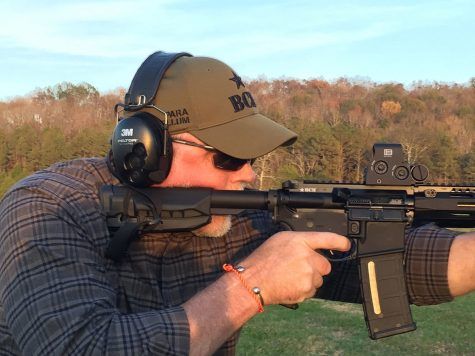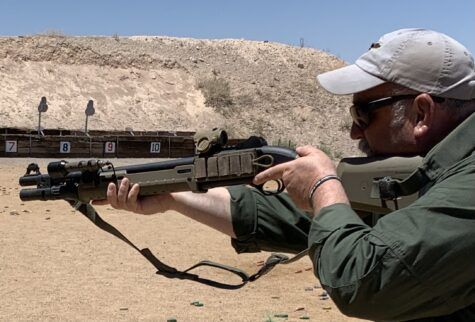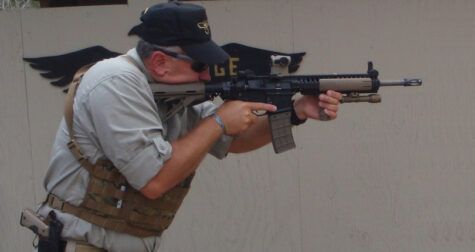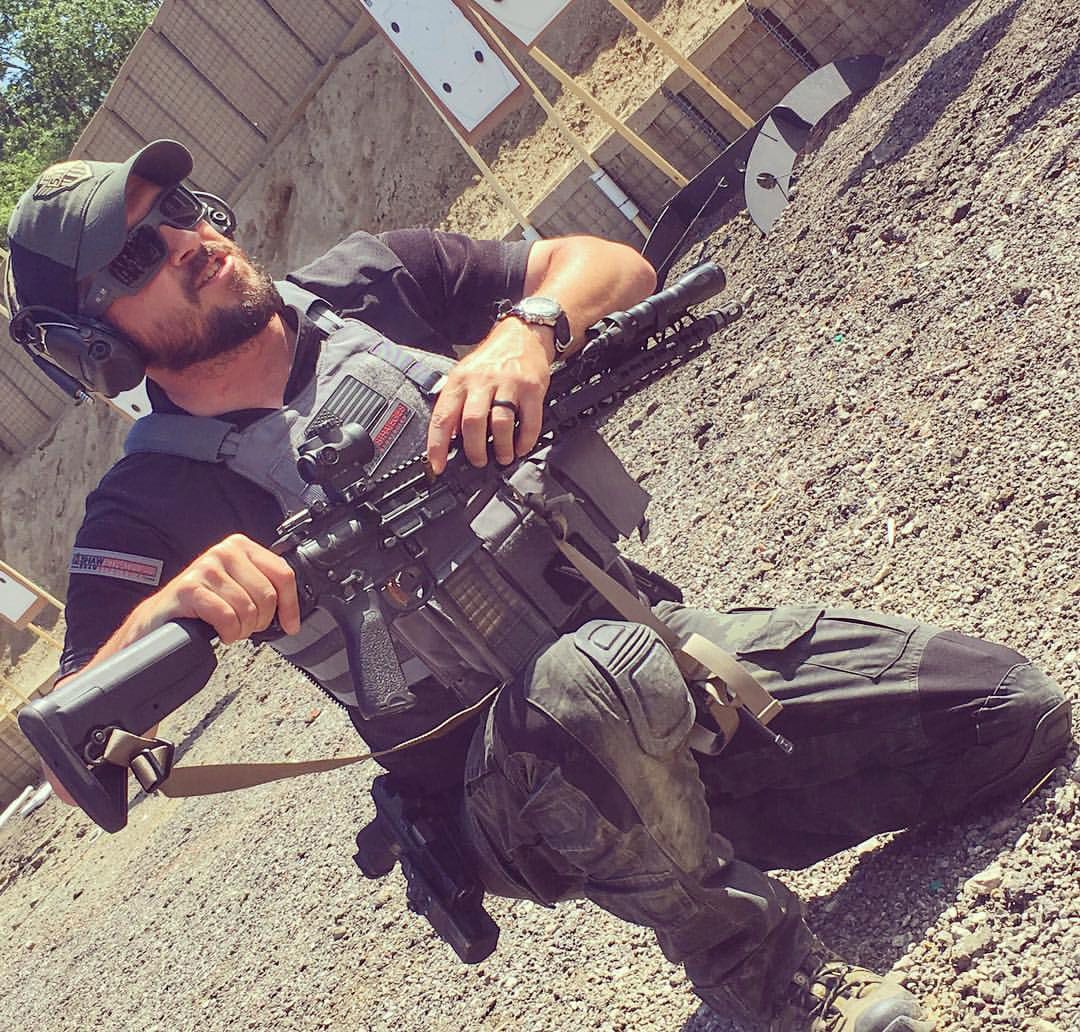
Daniel Shaw of Shaw Strategies is one of the most knowledgeable, thoughtful and down-to-earth firearms trainers in the world today. He’s spent a career teaching others as well as himself…always pushing himself to be better and more informed than he was the day before.
We recently sat down with Daniel Shaw to discuss his time in the Marine Corps, his feelings on the AR-15, the firearms industry, as well as the obvious and sometimes not so obvious benefits of firearms training. In case you’re not up to speed on Daniel Shaw, here’s a brief bio…
Via Funker Tactical:
“Daniel Shaw is a retired US Marine infantryman with multiple combat tours and instructor titles. He has developed curriculum and training standards for pre-deployment training and Marine Security Forces such as the Fleet Anti-terrorism Security Teams (FAST) and the Naval Nuclear Security Program. His direct action experience includes Level IV VBSS and In Extremis Hostage Rescue. Daniel has been a DOD/USMC firearms instructor for over 15 years. He holds numerous instructor certifications from the US Marine Corps to include foreign weapons and master instructor of handgun, rifle/carbine, shotgun, and medium to heavy machine guns. Daniel takes his life of training and combat experience and develops and presents curriculum to help law enforcement professionals and responsible armed citizens survive a deadly force.”
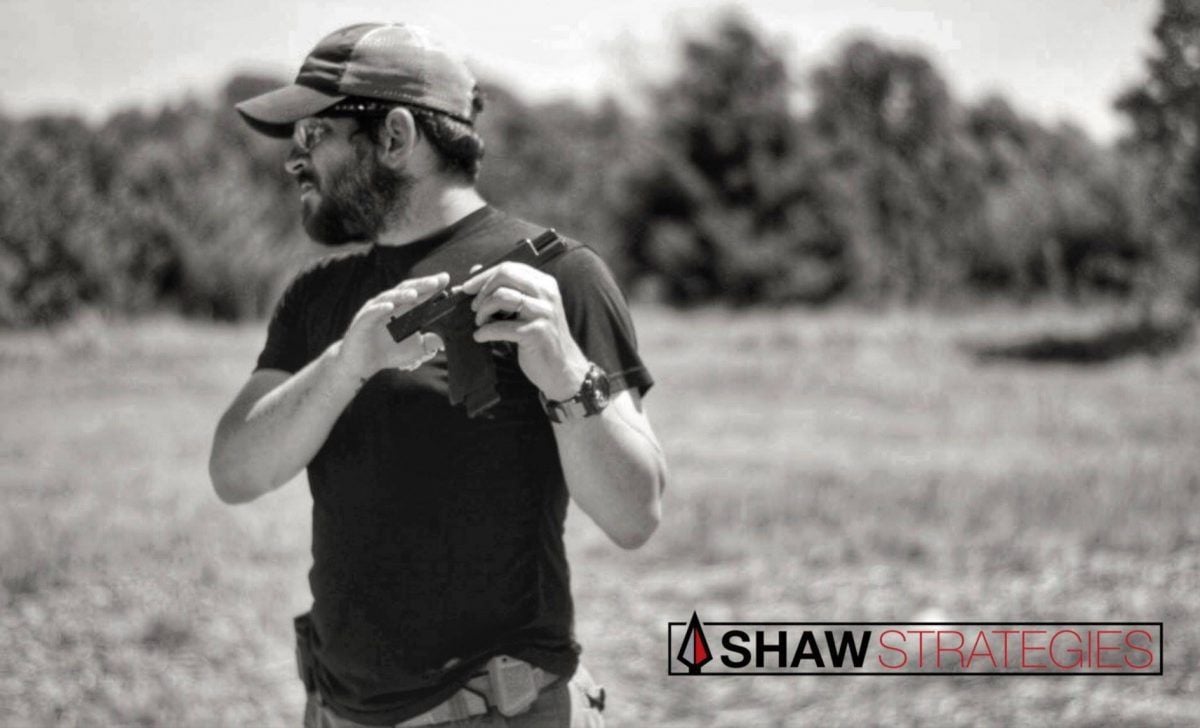
Q: Daniel, can you tell us about your time in the Marine Corps and how that led you to where you are now with Shaw Strategies?
Daniel Shaw: I joined the Marine Corps when I turned seventeen. I was a Dragon gunner. Now, the Dragon was an obsolete missile for killing tanks. So my platoon got assigned as the security element for a Force Recon platoon doing direct action stuff like hostage rescue, oil platform recovery, precious cargo recover, VBSS (visit, board, search and seizure).
There, we would shoot about 1,000 rounds a day…I was in shoot houses constantly, fast-roping out of helicopters, doing all sorts of cool stuff. As it turned out, I never got to do as much cool stuff again in all my years in the Marine Corps until I retired.
Smartest Guys in the Room
But these Force Recon guys that I was around…they were just some of the smartest people I ever met. They would start talking or they would be teaching classes and I would listen. When I could, I would just start asking questions. Whenever they were having conversations about tactics or what they should do, I would just stand next to them and take notes and not ever talk. I didn’t have anything to add to the conversation, but I was learning. It was a great position to be in as a seventeen-year-old.
Range Coach to Primary Marksmanship Instructor
Now fast-forward through my deployment…Paris Island ends up badly needing range coaches. I was sent there and I was able to work as a Range Coach. As time passed, I eventually became a Primary Marksmanship Instructor.
Later, I got back to the Fleet Marine Force and went to a new unit. As we were all getting ready to go to Iraq for the initial invasion, I worked with the Battalion Gunner in charge of weapons systems. I had my job as the Assault Section leader for one of the companies, but also secondary duty to work with the Gunner. Because of that, I would run range.
Coming Full Circle
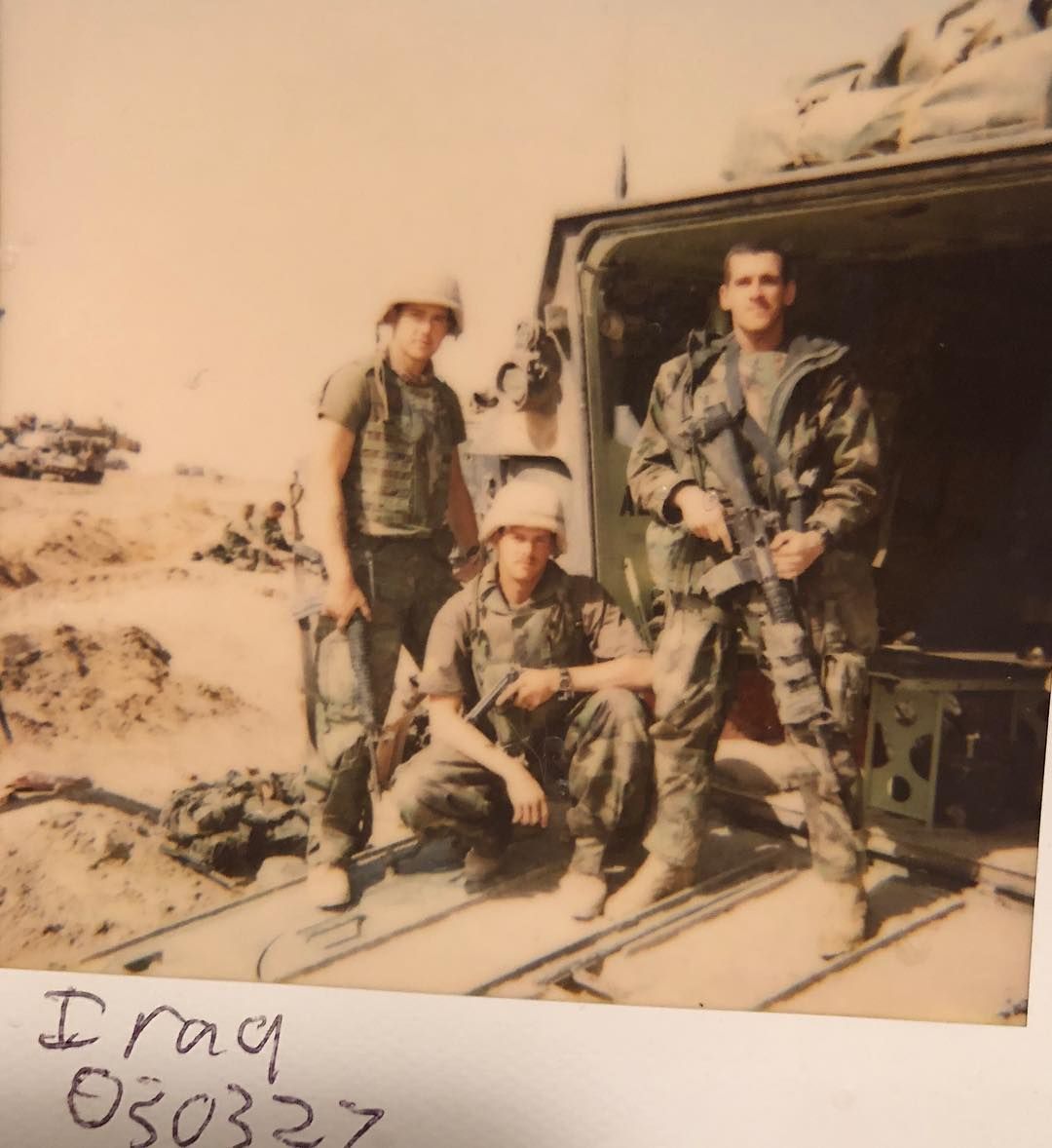
We went to Iraq and when we came back, I found myself doing more stuff with the Gunner…running more ranges and teaching classes. It was around this point I realized as I’m talking, there’s a bunch of young Marines standing around me taking notes. It came full circle. I was that guy six years prior, and now there were people asking me questions constantly. They were listening to me and believing everything I had to say…trusting what I was teaching.
And I realized, “I have to be right…People are believing whatever I say and they’re not questioning anything.” That’s was a big responsibility. But, I really started diving in and I enjoyed it…So I called my monitor and I said “ I really think I want to go to Paris Island.”
The Path to Weapons Instructor…and Beyond
So, I went to Paris Island and I taught CMT/CMC School (Combat Marksmanship Trainer/Combat Marksmanship Coach)…However, I found I was actually bored to tears teaching people to be CMTS…Instead, I decided I wanted to go to Security Forces. I had visions of burning coca fields in South America with Navy SEALS…unfortunately they don’t do that anymore. But I did end up getting to Security Forces.
Now, the instructors there were not infantry guys, so they didn’t have a lot of the experiences I had. Because of that, I ended up helping the brand-new students right out of boot camp learn weapons. And so, when the time finally came to be handed my assignment, I learned I would be staying on there to be a Weapons Instructor. I did that for a few months and became a Weapons Team Leader. I did that for a few years…and it was awesome.
Q: Can you describe that a bit, and when did it occur to you to do this sort of training outside of the Marine Corps?
Daniel Shaw: As a Weapons Team Leader, I could call the armorer and say “bring me down this gun and that much ammo” and they’d do it. I had my own range with automated targets. I could push a button and bring up twenty pieces of steel. So, I got to do a lot of testing with my team and learn a lot of stuff.
But somewhere around there, I began questioning a lot of what the Marine Corps was doing…and I still do. I think they’re very far behind in a lot of things. Even still, I think they are ahead of all the other services.
Exploring New Paths
I had gotten a lot of experience, but I wanted time to do practical things, time to test my own stuff, and not just do what someone else was telling me to do. I wanted to be able to figure out “my own thing”…and figure out HOW to figure out things, and develop new drills. So eventually, I went to Okinawa and then retired afterwards.
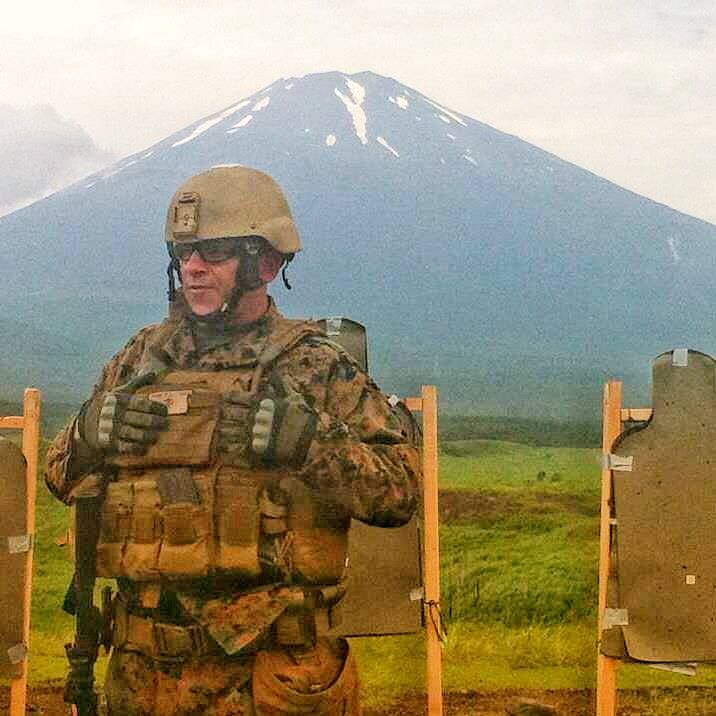
By that time, I had been doing a podcast since around 2007-2008. So, when I got out, people began asking when I was going to teach a class. So, I cranked up a training company and was traveling around all of the time teaching, and it has just taken off from there.
Q: Leaving the Marine Corps and starting your own training company…can you talk about how your training changed or progressed?
Daniel Shaw: Looking back now, in Security Forces, while I thought I was getting things figured out, I was wrong about a lot. I was constantly getting things wrong. Even still, I think it was some of the best training those Marines got in their whole Marine Corps career. I’ve had many of them tell me that.
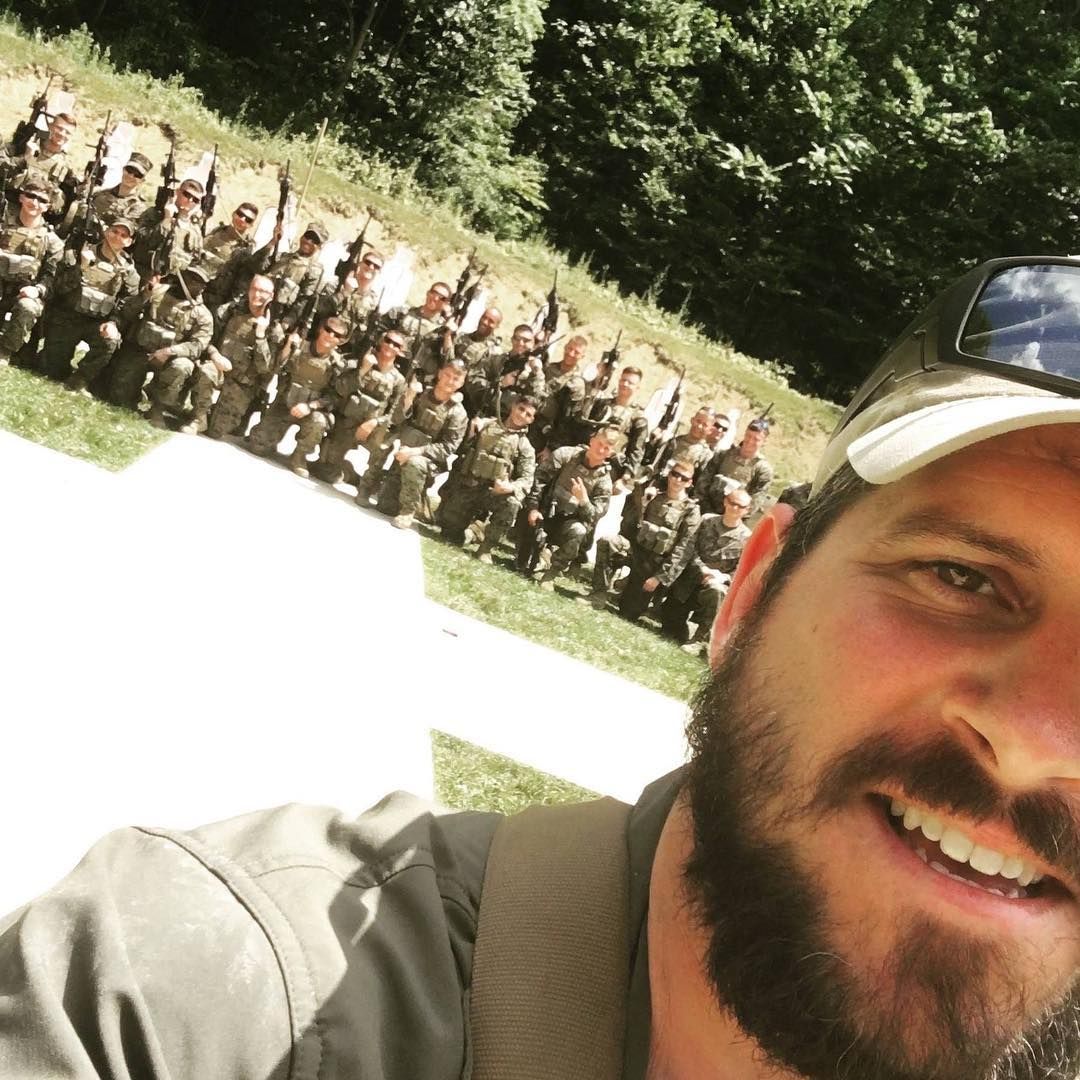
I have a saying and it’s probably the only profound quote I have ever said (laughs). If you’re coming to my class, you’ll hear me say:
“Most likely there’s going to be things that I cover today, that a year from now, I am going to believe are wrong. It may not be so wrong today, but when new information becomes available, if it’s “wrong”, I’m going to shift, and teach what’s “right.”
My point is, I’ve been wrong about so many things in the past, that I know it’s not possible that I’m “right” today. I’m always going to try to be more “right” tomorrow. Now, I do think that I am the most right I have ever been, but even then, I still know that I am not “right”…if that makes sense.
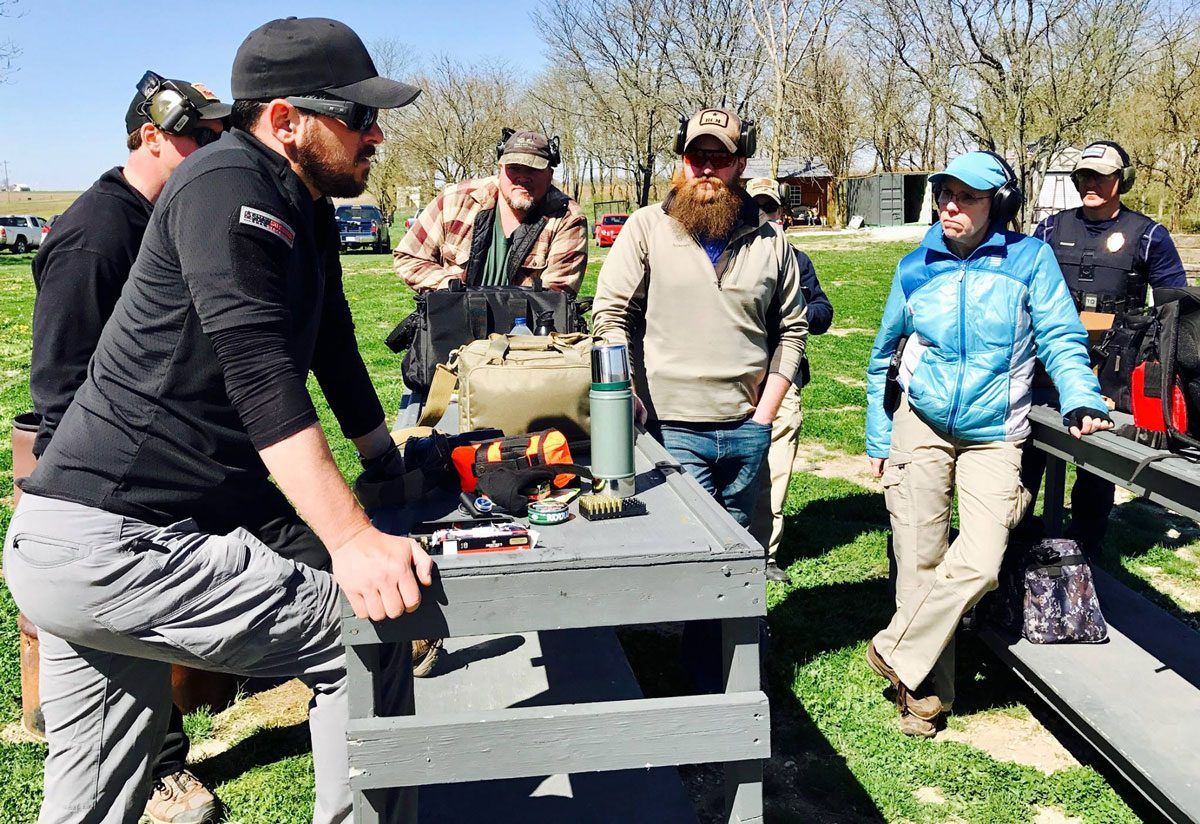
Q: Where does the realization come from that you perhaps may have been “wrong” about something?
Daniel Shaw: The realization that I am wrong can come in a lot of different ways. There is video, but I don’t put 100% stock in video evidence. I do think I am very fortunate to be trainer at a time where we can see fights and not just hear someone’s embellished stories about how “awesome” they were in the fight. Instead we get to actually see it. There’s tons of information that we can take away from that. But still, there’s also a variety of factors you have to look at in those fights, so it’s only one sample size.
Responding to Patterns
However, when we start seeing a lot of videos of the same thing happening, it’s worth paying attention to. For example, I was heavily looking into one-armed engagements using handguns. In over 30 percent of video of shootings, we see one-handed shooting. That’s pretty strong evidence we might want to build that more into the curriculum. So, on Day 2 of my handgun class, we spend quite a bit of time on one-hand manipulation and one-hand techniques. It’s a skill that is likely to be used in a handgun fight.
Instructors Influencing Instructors
As far as other places where I can learn new things, it can come from simply training with other instructors. I have a lot of friends out there currently doing awesome stuff. I attempt to jump into their classes as often as I can. Last year, I took 5 classes. The year before, I took seventeen.
And in those classes, you learn little things along the way. Maybe it doesn’t change every single thing you were teaching, but there are additions or a subtraction or something that makes what I’m doing better because of something I picked up along the way…information that I didn’t have.
Q: In all of your experiences in both the Marines and as trainer, what is your overall opinion of the AR today?
Daniel Shaw: I love the AR. I say that I love AKs…AKs are something I like to learn and study, and I love running AKs, but if I were to deploy tomorrow because the Marine Corps called me back, because they can for like twelve more years, because I’m in the Fleet Marine Force Reserve, I would definitely not be going with an AK. I’d be rolling with an AR.
When I first got there, I was handed an M16A2 with a full-length stock and a 20” barrel. I have stayed with that my entire life. Even today, I have to have my stocks all the way out. I have an argument in class that it creates more space, more leverage, more strength…but regardless of stock, it’s just such a great rifle.
AR Advancements
It’s a great rifle even with that old 20” barrel, nothing sexy about it, just a regular old hand guard that you can’t attach anything to it. We used to duct tape and hose clamp with spacers old Maglights on there that we would get 20 lumens with. Fast forward to today, the accessories have come so far.
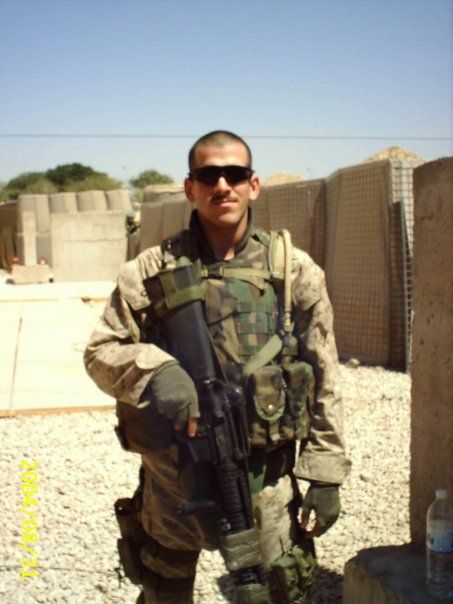
We’ve been killing bad guys on multiple continents going on two decades and during that time, we have learned a lot. The result is a lot of that stuff has now come back to law enforcement and to the armed citizen’s guns. Today, many manufacturers are truly making stuff out there to solve problems.
That said, some of them are still making stuff that actually creates problems, or they’re making things to solve “problems” that don’t really exist. Despite of that, there’s been a lot of problem-solving accessories for the AR that have made the gun much better.
The Right Rifle at the Right Time
The optic thing was a big move. I used iron sights for my first deployment to Iraq. There have been so many moves in the right direction. The gun is more reliable than its ever been, because machining is just insane right now.
Also, I think some of the old reliability issues are dying because the people that were involved in that back then are much older now, and their voices are just not out there any more. When this gun was released, the original M16 in Vietnam… there were tons of problems, the gun wasn’t ready. Ammo wasn’t ready. Cleaning kits were not ready. Barrel twist was all wrong. There were tons of reasons why that gun was destined to fail back then. And some of that held over for a while. But I think that’s dying out now.
Today, people have realized this is a solid gun. Every time someone comes out with a new gun to try to replace the AR pattern rifle, it doesn’t make it. I don’t know if that’s because we’re just so set in our ways…but at the same time, it’s just a great rifle. I don’t think I’ve seen anything that compares yet. There’s some cool stuff out there that’s come after it, but I don’t think there’s anything that touches an AR right now.
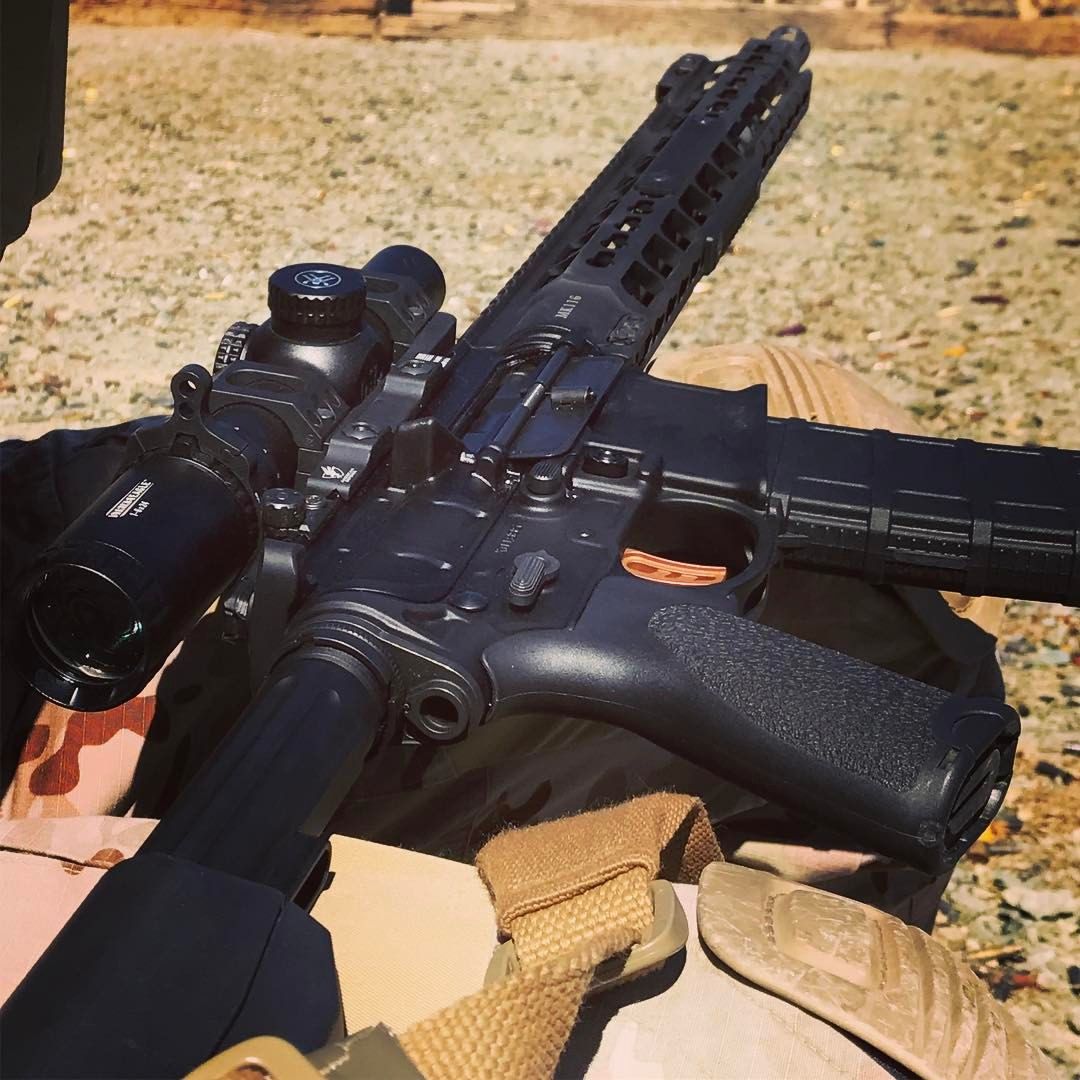
Daniel Shaw on 5.56 vs. 7.62 NATO
5.56…It’s also a great caliber. People on the internet argue because it’s not a .308. I argue that I’ve carried very, very large quantities of ammunition walking very long, long distances and they are welcome to carry that much ammo in .308 if they want to. I’ll stick with my 5.56.
Q: With the wide variety of accessories out there now for the AR, what do you think is a prerequisite to bring to a training class like your Carbine Vitals course?
Daniel Shaw: It can be simple. Frankly, I don’t get big into hardware. People will come up to me and ask if I’ve seen this new gun…Probably, I haven’t…Instead, I try to focus on the software integration with the hardware…how to run whatever you have most effectively.
I have guys show up with Hi-Point carbines in classes. People scoff, but I’m like, “hey, that’s what the dude’s got. It’s what he can afford…I’m going to teach him how to fight with the thing.”
Daniel Shaw on Defensive AR Build Basics
As far as an AR though, if we’re talking home defense/personal protection…you should certainly have a light on your rifle. While we’re not going to use lights in a Carbine Vitals class, we are going to test whether the light is going to stay on that gun or not. We’ll see if your mounts work. We’re going to pressure test your gear…a lot. I also believe you should have an optic on your rifle. And by that, I mean a good, quality optic if it’s going to be a defensive gun.
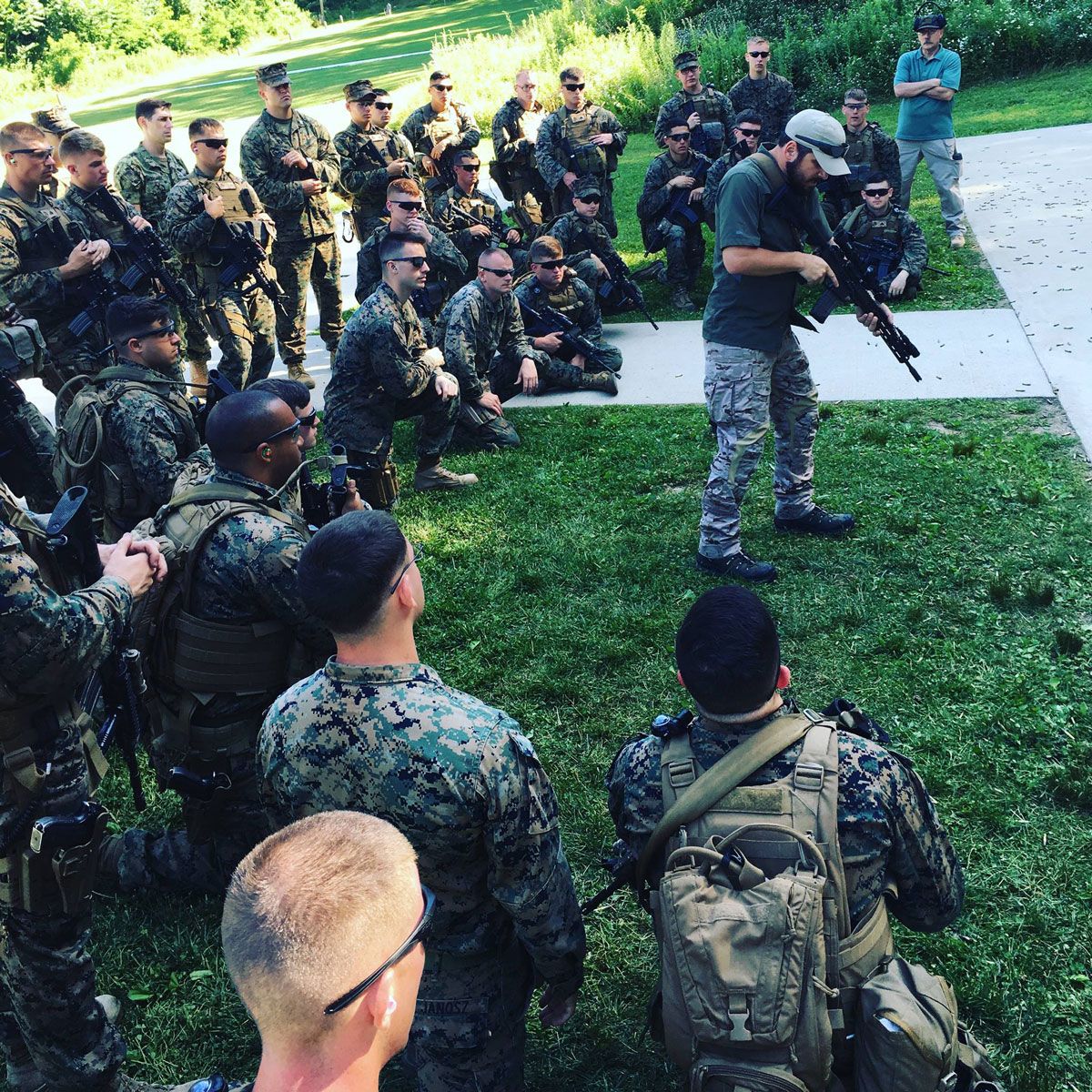
Buy a Quality Optic
If it’s for riding in the back of the truck for smoking a coyote once and a while on your farm or something, you can get away with something that’s not so great. But if you are talking about a dedicated defense gun, you need that quality optic on it.
Finally, If you want to go to the next step, you should have a sling on your gun. You’re always going to have a love-hate relationship with it, but you need a sling. While a sling might cause some problems for you, it’s going to solve even more problems.
Q: Let’s say, hypothetically, I think I’m a well-armed guy…I think I’m a decent shot, but I’m just not wanting to spend a bunch of money on a training course. Personally, I know a lot of folks feel that way…they’re comfortable with their current skill level, and they’d rather put those funds towards some cool accessories or something.
Daniel Shaw: Well, I think there’s a lot of folks out there that don’t understand that they don’t shoot guns very well. They don’t know what they don’t know. They don’t know how much they’re missing. They’ll think they are good at shooting, and they’ll maybe do a few things well, but they’re missing a lot of the other pieces. There’s decision making, doing it under stress, doing it under cardio…there’s a lot of things that come into play.
Daniel Shaw on Growth in Discomfort
A few months ago, I took a shoot house class. All the weapons handling and the shooting stuff, I did great at it. But, there were definitely some target identification issues I had in the class. But, there’s growth in that discomfort. I steal that idea from my buddy Ryan Hoover…you have to put yourself outside of your comfort zone and figure out what you’re NOT good at.
That discomfort is what tells you what you need to work on at the range. A lot of people go to the range and they are lazy. They only practice what they are good at. They practice what looks cool on Instagram, but they are not putting in work and because of that, they don’t even know what they are not good at. The shooting part and the accuracy part is the easy part. It’s all of the other problems happening at the same time that is the challenge.
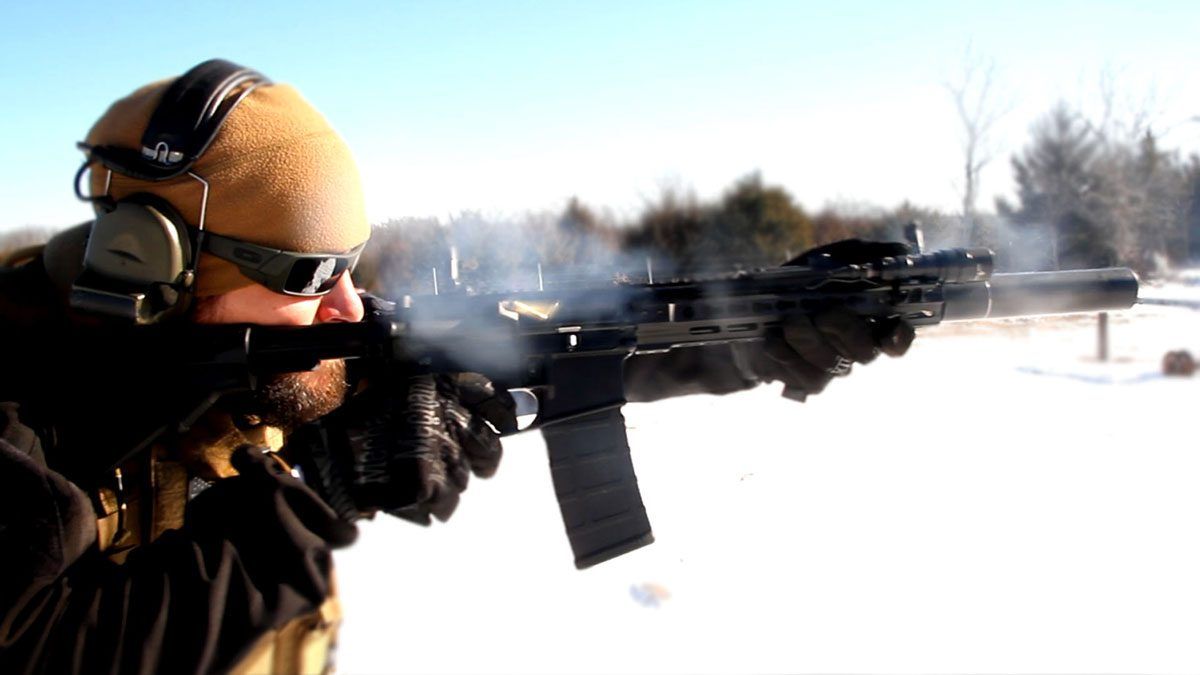
My Carbine Vitals course gets into that a little bit, but what really brings it home is a class I do with law enforcement, Patrol Rifle Problem Solver. It’s two days of thinking and solving problems with a gun in your hand. It’s a very physically demanding class, and it really takes people who are really solid shooters out of their comfort zone.
Q: Any other advice you’d share with our readers?
Daniel Shaw: First of all, don’t trust any firearms industry marketing. This industry will lie to you and not think twice about it. Companies will pay for lies. Never trust a gun review on the internet. Definitely don’t trust a gun review in a printed publication. Never trust a video review…anyone on YouTube reviewing guns. Don’t trust those. They’re not all taking money, but a lot of them are pay-to-play. Also, do not trust me. Do not ever buy a gun based solely on my opinion of the gun. I’m a firm believer in different strokes for different folks.
Q: So, in your opinion…what is the best source for information then?
Daniel Shaw: The best place I have found to go see if gear works, what you NEED, and what tools are out there to solve problems is in a class with a reputable instructor. That means a class that’s not just running drills all day. That’s not a class. That’s supervised range time. You can get some information out of that, but when you’re out there with someone who really knows what they’re doing, doing it every single day, teaching all the time. They see all the different gear come through classes. So, I’d say get to a class.
Daniel Shaw on Bringing the Basics
I say that, but then people start worrying about what they need, gearwise, to even be able to attend. My answer to that is “you need a rifle, a positive mental attitude and some magazines.” You have jeans? You can put mags in your pockets.
Come to class, learn about the problems you’re going to have, and then you can start picking solutions for those problems. You can begin spending some money intelligently and not spend it on garbage you don’t need.
It’s not the gear that is going to make you amazing. But if you figure out what problems you have and then figure out how to solve your problems, you can save a lot of money and get the right things the very first time. So again, the single best place out there for an armed citizen to figure out their problems is to simply jump into a class.
Q: Gear aside, I know several folks who have backed out of training classes because of fear of being in over their heads. I think it can be intimidating for folks to leave that comfort zone of the range…
Daniel Shaw: For sure. A lot of folks, when you tell them to take a class, the next thing I hear is “well, I don’t think I’m that good.” Or they have a concern like “I think I’m going to hold up the class.” That is the most common thing I hear. “I’m not ready for your class, man…I’d just hold the rest of the class up.”
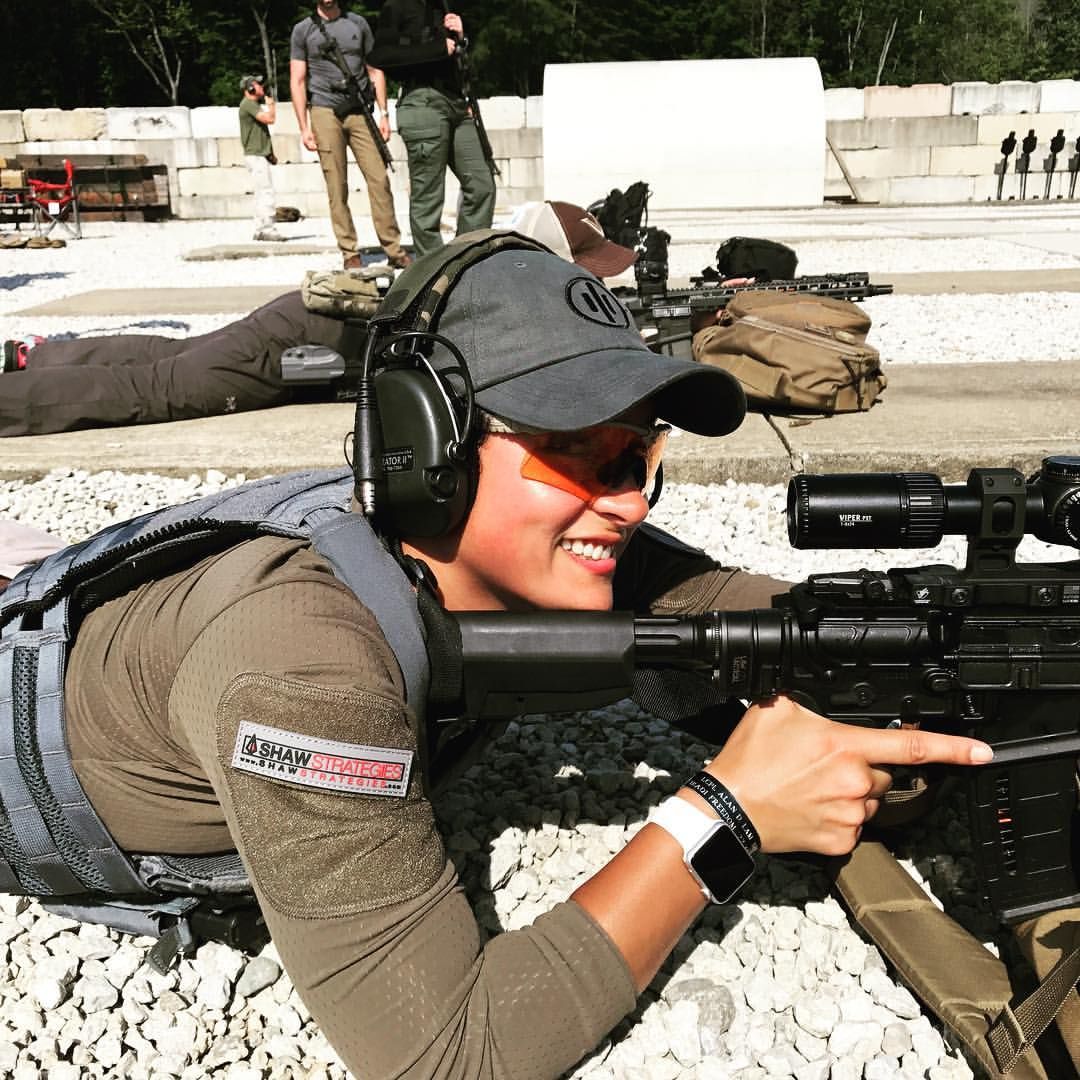
I tell them, “look, I don’t care if you’re a soccer mom that’s never even seen a gun in real life or you’re a seasoned SWAT cop, you’re going to get something out of the class. I promise you, you’re not going to hold it up.”
Instead, they’re going to grow and they’re going to have a great time doing it. It’s going to be low stress, except for when we WANT stress…and they’re going to gain all kinds of information they didn’t even know existed afterwards.
Learning Something vs. Selfies with the Instructor
So, my advice is jump in and take as many classes as you possibly can. Ideally with a reputable instructor. But go in with the bare minimum. Instead, just take notes like crazy, and figure out what you need. But please take notes.
I see a lot of folks take a course just to hang out with the instructor…to be with that person they see as kind of a celebrity. I don’t think there’s anything wrong with that. But, I love the student who comes in with the attitude of “I am here to learn something”…not to impress the instructor, not for some content for Instagram and selfies with the instructor.
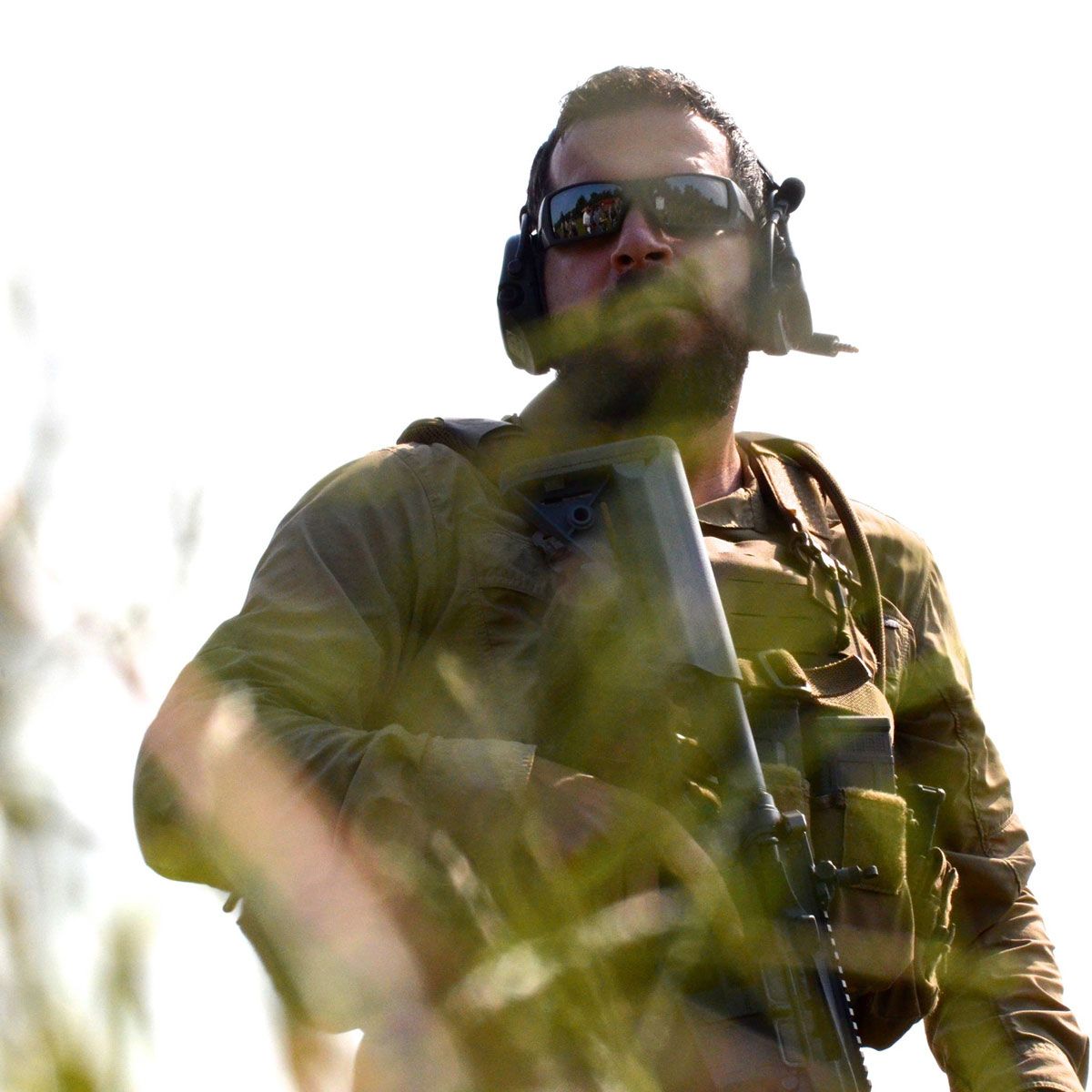
Q: I’ve heard it said that training benefits more than just the person taking the course. Would you agree there is a bigger picture to consider?
Daniel Shaw: I’ll preface this by saying I am for training of armed citizens, but I am not for any mortal man telling me what that training should be. I am for people being able to carry guns without being told by some body of men (who have no idea what they’re doing) that they should have to jump through certain hoops to do it.
But as a community, we have got to inspire our brothers and sisters to get training. Because every time a person stores a gun improperly and a kid is killed in a house, or every time someone does something stupid with a gun at a public event and they discharge accidentally, that sets us back.
I don’t care what anyone says. I’ve heard arguments my entire life. The 2nd Amendment can go away. We could lose it. Yes, it’s our fundamental right, but we are attacked all the time. And, any time anyone does something stupid, we are set back.
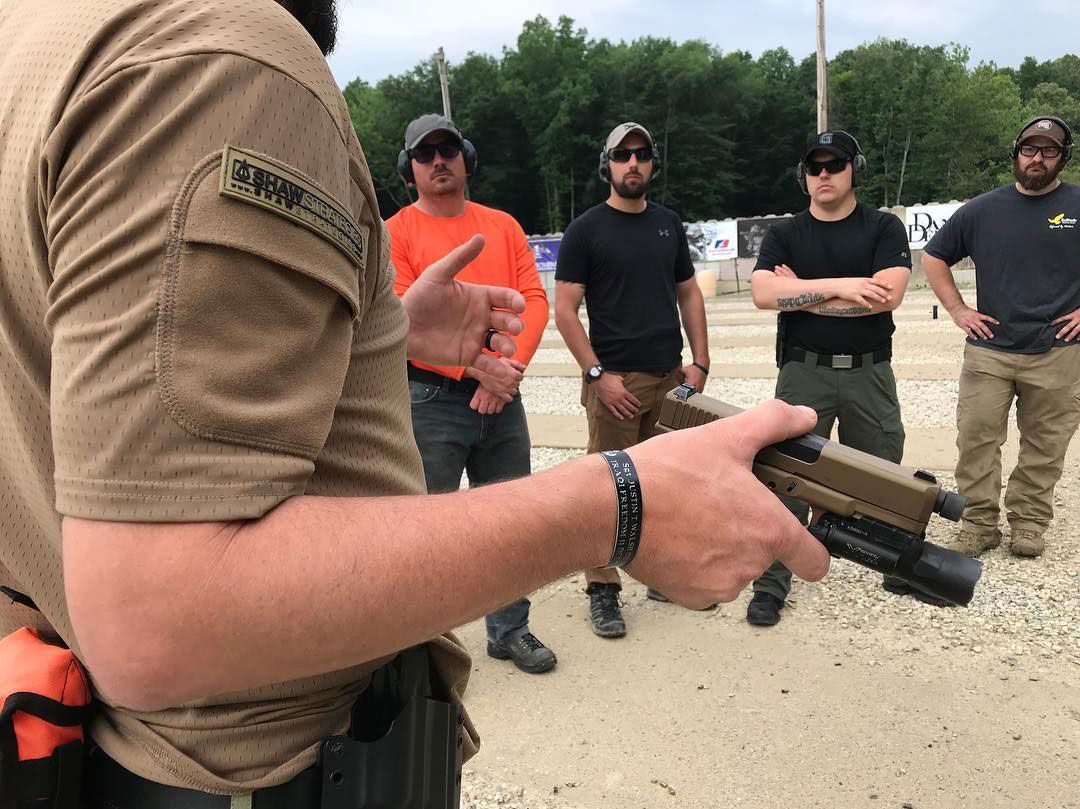
Daniel Shaw on the Forgotten Benefit of Training
The more training people get, the safer my country is against everything from evil doers, bad guys, violent criminals, and tyranny. Every time someone gets more training, we’re safer from all that. But, every time someone does something stupid, our county potentially starts heading down a path of people not being able to protect themselves.
Finding Common Ground
For society as a whole, we need to be strong and together and stop arguing about stupid stuff like 9mm versus .45, how many stoppages your 1911 is going to have, and all these other arguments we’re being divided by right now…even which lobbying organization is the best versus who sucks.
Of course, we need to work on those things, but we have to stop the in-fighting as much as possible and find common ground. We need work together, inspire the idea of training and keep fighting for what we all believe in.
###
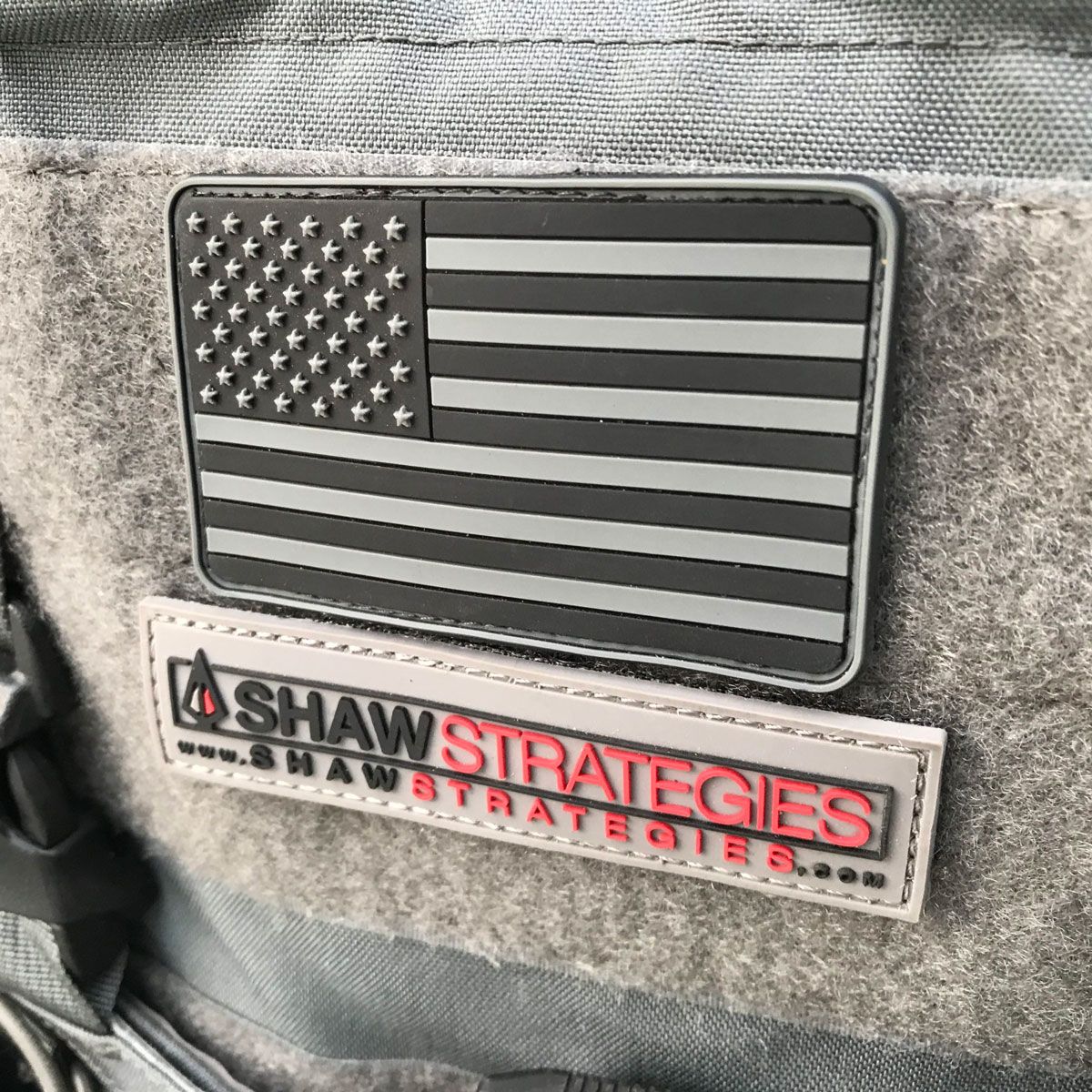
Thanks to Daniel Shaw for the interview…to learn more about Daniel Shaw and Shaw Strategies, visit www.ShawStrategies.com Also, In addition to training, Daniel is the director of marketing at Gunmagwarehouse.com. He’s also planning on bringing back his long-running Gunfightercast in the near future.

